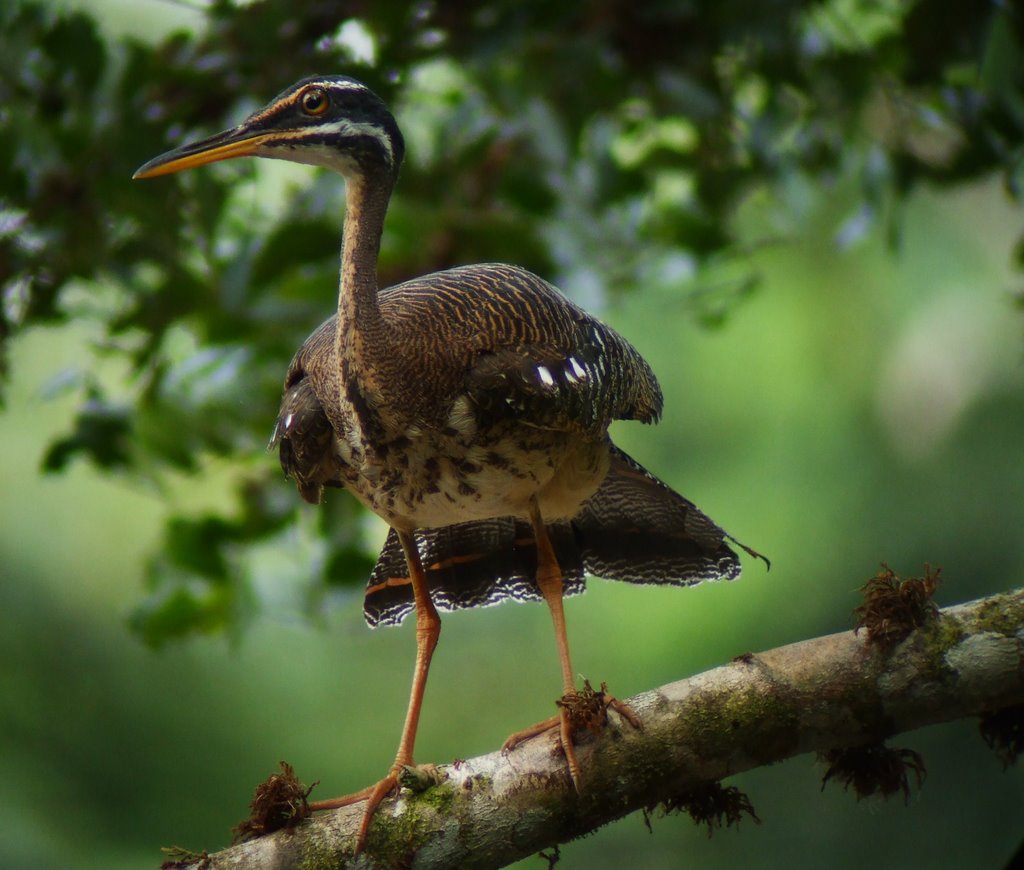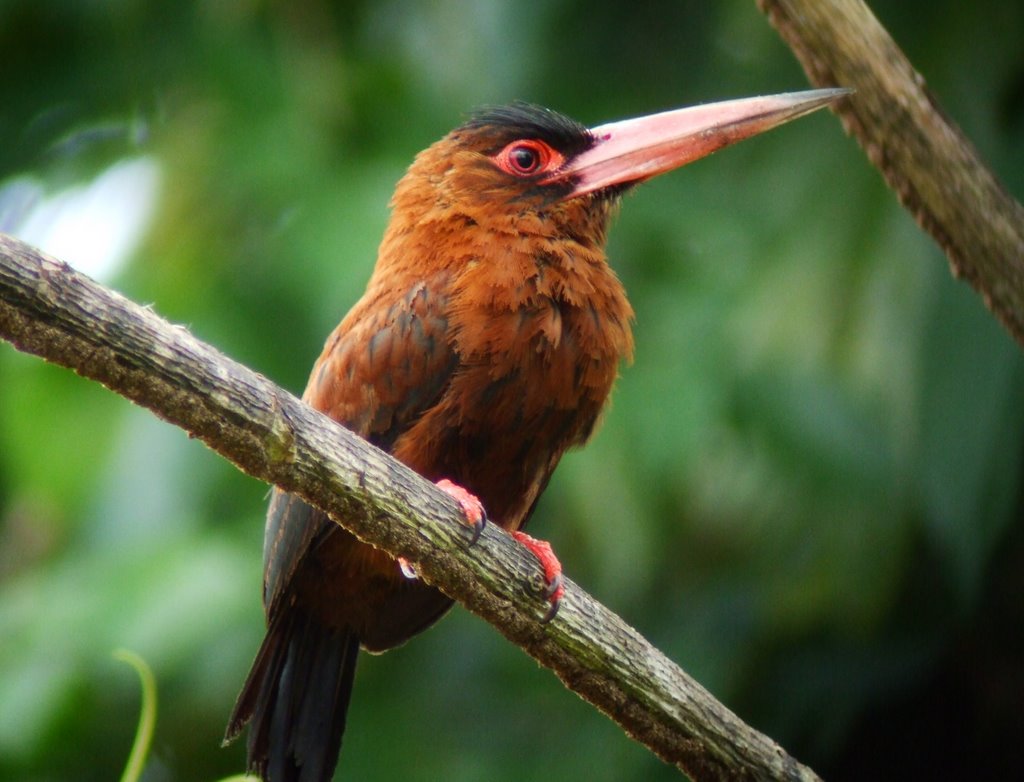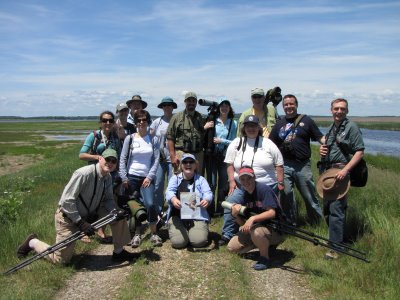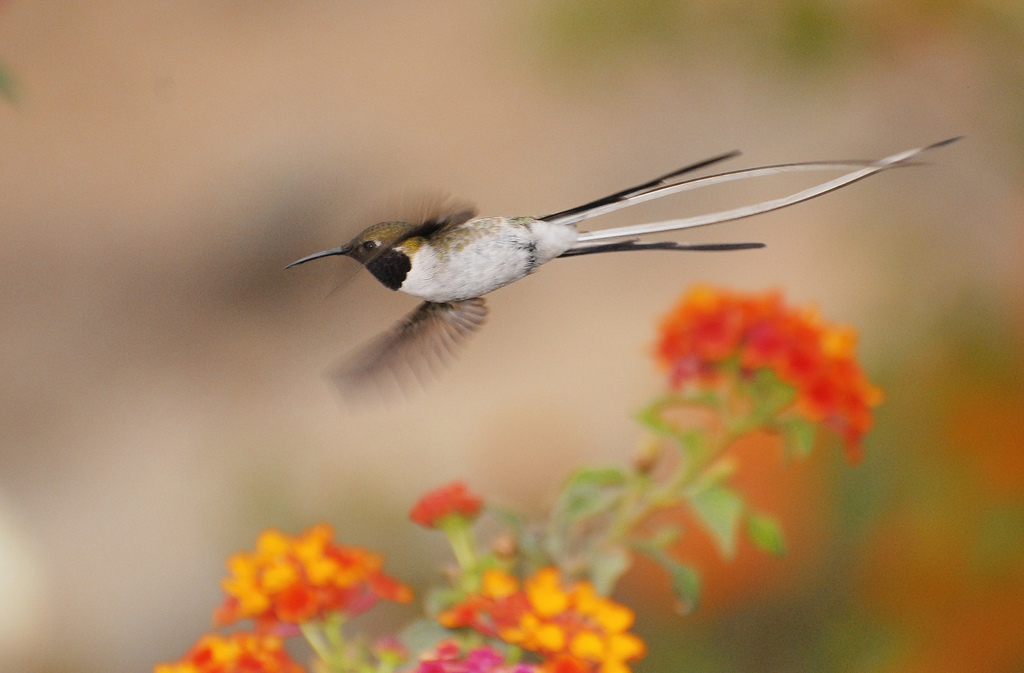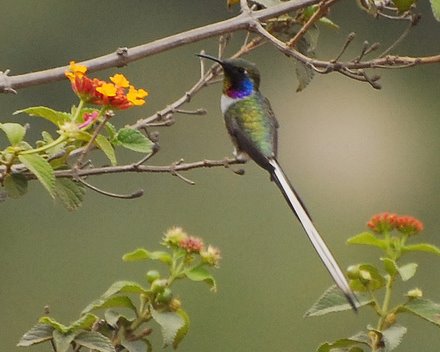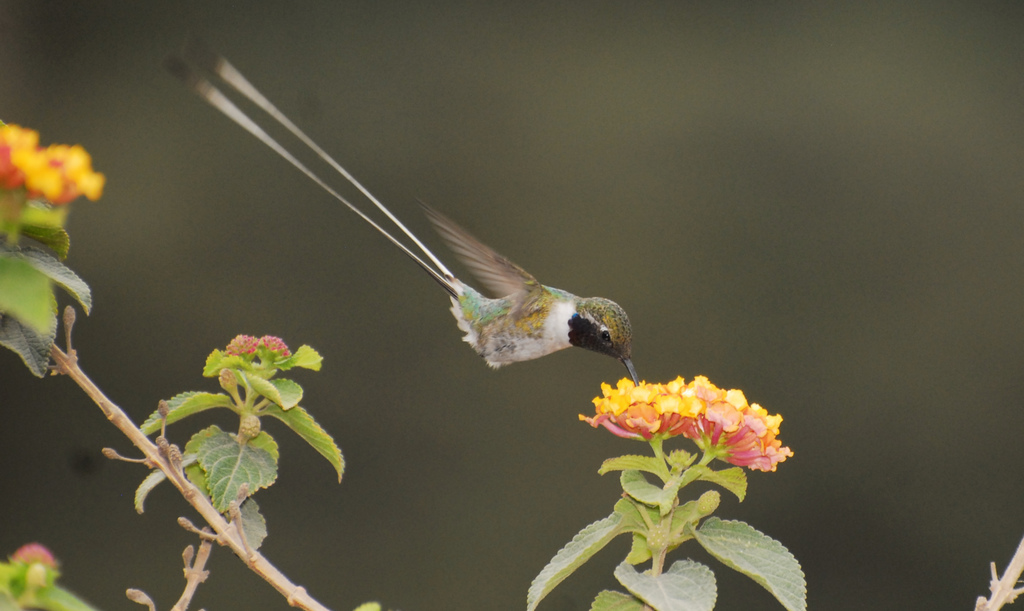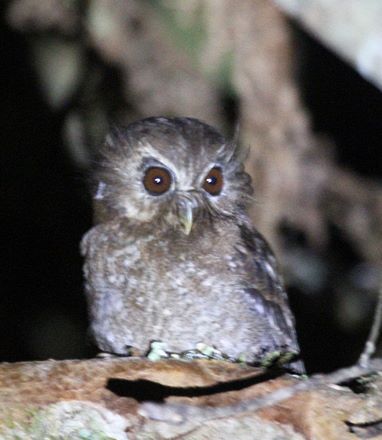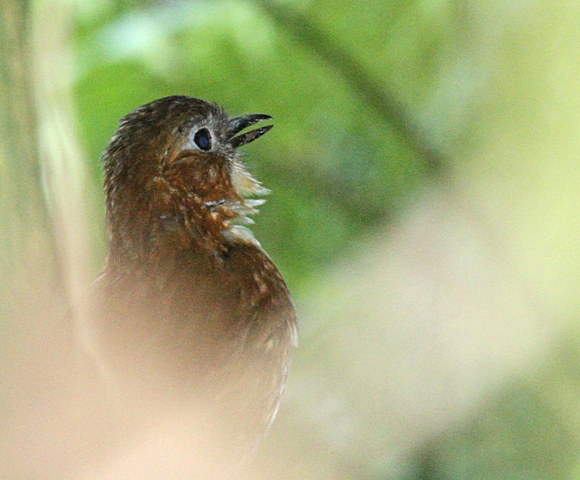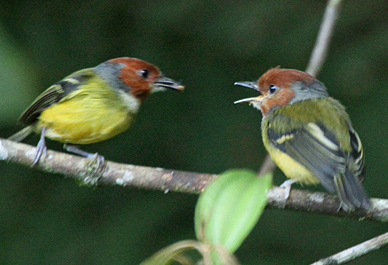- International Day for Biological Diversity in Sierra Leone by Daniel Siaffa: Daniel Siaffa – from The Conservation… https://bit.ly/croRTm #
- Wildlife Conservation Society of Tanzania’s International Day for Biodiversity celebrations: The Wildlife Conserva… https://bit.ly/ccOkml #
- UK Sea-eagle reintroduction ‘postponed’ https://bit.ly/bgXjHZ #
- International Waterbird Symposium in The Hague celebrates 15 years of flyway conservation in action: The 15th Anni… https://bit.ly/bIqm3I #
- RT @DawnFine Rose-breasted Grosbeak female bathing: Howdee all, Another video from High Island, Texas Taken fro… https://bit.ly/aon2up #
- RT @Dendroica More June Moths: Here are a few moths I found over the weekend. My usual procedure with moths I find… https://bit.ly/cXI8C9 #
- Marsh Diaries Part Six: What a difference a week makes.
Where last week we had eight eggs, this week we had three … https://bit.ly/dtOB7f # - Mississippi River can buy time for Louisiana wetlands, scientists say: Mississippi River water can keep oil away f… https://bit.ly/b0kQeQ #
- Haring Ibon: A week-long photo exhibit to celebrate Philippine Eagle Week at SM City North EDSA has attracted many… https://bit.ly/bVqoS4 #
- A Great Way to Say Thanks: Following the recent unfortunate incident where a Portland Police officer was asked to … https://bit.ly/bwpvfG #
- ReservoirCatz: Commercial break: https://bit.ly/atv361
– discretion adviced # - Least Terns Doing Well in Oklahoma https://bit.ly/aHc2YG #
- Birding the Adirondacks – Boreal Birds, Bugs, and Bears: “Life is like a box of chocolates. You never know what yo… https://bit.ly/dmRxfu #
- Doug McWhirter's note of lifers on a recent Central Peru trip. https://bit.ly/cRcyLz #
- Iona Sewage Ponds in June: June is notoriously the worst month for sewage pond birding. We’re “between the seasons… https://bit.ly/dz33bO #
- Black Dirt Dickcissel https://bit.ly/cFGajx #
- “Green Growth”: Sustainable Development or Doublespeak? https://bit.ly/bEO8Vq #
- Did the farming lobby halt UK eagle re-introduction? https://bit.ly/cTglmR #
- Three charismatic southern African birds heading for extinction: Three of South Africa’s flagship bird species hav… https://bit.ly/dsAVN6 #
- RT @DawnFine Hooded Warbler: Howdee all, I took this short clip while birding Padre Island during spring migratio… https://bit.ly/9RTdT8 #
- The Green Bible: It is too easily forgotten that some of the world’s greatest naturalists were also devoutly relig… https://bit.ly/bQCebT #
- RT @Dendroica Great Egret: A Great Egret fishing in the Raritan River.Posted on A DC Birding Blog under a Creative… https://bit.ly/duFUMe #
- RT @Dendroica A Oil Spill in Utah: While most of the media attention has gone to the ongoing environmental disaste… https://bit.ly/a9H4JR #
- I am preparing an update of this blogpost about our Manu/Amarakaeri
birding project – as we just ran the first two… https://bit.ly/bppKbb # - ReservoirCatz: Sanderling scandal in BBRC: The long-awaited British Birds Ra.. https://bit.ly/cmMr32
– discretion adviced # - Sharpbill photographed in Manu 2008 by Alex Durand https://bit.ly/dcl8rB #
- Thanks for RT Ray @RayBeckerman: RT @Kolibrix: Sharpbill photographed in Manu 2008 by Alex Durand https://bit.ly/dcl8rB #
- New blogpost finally. Budget Manu vs Budget Tambopata. Analysis of Manu community program. https://bit.ly/dm2eS9 #
- Great shots by Alex Durand of Sunbittern and Purus Jacamar in my latest blogpost https://bit.ly/dm2eS9 #
- What are your top 5 tours you have taken or the top five you want to take in these countries? Ecuador, Venezuela,… https://bit.ly/9E3hq2 #
- Molt Time: Here in Vancouver the skies are filled with raggedy-winged Northwestern Crows, adults whose nesting dut… https://bit.ly/cxUemp #
- Thanks for retweets. @DawnFine @rachelbirder: RT @Kolibrix Great Sunbittern & Purus Jacamar pics in my latest blogpost https://bit.ly/dm2eS9 #
- New on BirdersWorld.com: 20 more great birdwatching articles https://bit.ly/9WOEZT #
- Robird: Effective Tool or Silly Scam? https://bit.ly/c6K8ww #
- Extremelt thankful to @JohnHaydon who recommended the Pomodoro technique as time manager and help me concentrate. https://bit.ly/13ZQoR #
- RT @thegrumpyowl: Have no ideas what these pills are. Hoping they cure my headache and don't induce menstruation. #
- RT @rachelbirder: RT @MargaretKinney: IKEA to banish incandescent bulbs https://bit.ly/dhhpqR RT @rmassingham via @MNNDaily #
- RT @Dendroica Gulf Oil Spill Estimate Raised Again: Rehabilitators treat an oiled pelican / US Coast Guard photo T… https://bit.ly/9LrkJL #
- BirdLife Partners awarded the prize for best EU LIFE Nature Projects: Three BirdLife Partners have been awarded th… https://bit.ly/bdQPYl #
- Supporting migratory bird conservation by Ann Scott: Imagine the New Forest and a leafy walk in part of that fores… https://bit.ly/bYAkkq #
- The Killing Fields of Kuwait https://bit.ly/95Egh5 #
- Great shots by Alex Durand of Sunbittern and Purus Jacamar in my latest blogpost https://bit.ly/dm2eS9 #
- Surfing for Birds at Pipeline Road https://bit.ly/bkUsxn #
- Rear Window: City living has its darker side–literally so for us here in Vancouver, with our back windows facing a… https://bit.ly/9LjB7k #
- First Thoughts on the New Canon 100mm Macro: While I was originally a bit hesitant as to whether the rather consid… https://bit.ly/cyR1iZ #
- RT @DawnFine Cactus Wrens in Love: Howdee all, I have been posting a few of my favorite videos..I took this one t… https://bit.ly/cHWAu8 #
- Interesting discussion on Kolibri Expeditions Facebook Page. Which are your top birding destinations in South America? https://post.ly/jlZL #
- RT @hammerchick New blog post at my tech writer blog: are social media social? https://tinyurl.com/28pl5ym #
- Independent birders on your way to Peru this
summer. Our cars don't have much work strangelty enough. Anyone,… https://fb.me/AlQhEDP6 # - Independent birders on your way to Peru this summer? Our cars don't have much work strangely enough. Anyone, want… https://fb.me/ATj54WxS #
- ooops sorry for rubbing it in…the updates to Twitter are automatic from the Kolibri Facebook page and I did some editing of some typos! #
- How to make a Sharpbill image rank higher on Google! https://bit.ly/daeKog So much easier to blog on Posterous 2 posts in 3 hours! #
- Insects at the Wallkill River National Wildlife Refuge https://bit.ly/8ZeK18 #
- New Budget birding SE Peru trip presented https://bit.ly/dm2eS9 #
- BBC fund helps to keep albatrosses off the hook: BirdLife seabird conservationists in Brazil have made a breakthro… https://bit.ly/aZR3Al #
- Cala Boca Galvão https://bit.ly/bizaZE #
- ReservoirCatz: Marmora's Warbler creates enormous cock-nest in Gwent: The de.. https://bit.ly/aJU9Z9
– discretion adviced # - BirdLife Partners Tweeting away…: Readers of the UK’s Guardian newspaper have voted BirdLife International’s Twitt… https://bit.ly/9pAyKy #
- Long-tails: The sputtering, stuttering calls that drift down from trees all over Kitsilano are the calls of Bushti… https://bit.ly/cNgZRI #
- RT @Dendroica Cleaning a Sea Turtle: Checking a turtle's eye The Deepwater Horizon Response Flickr site is one pla… https://bit.ly/aMpk3q #
- Whale faeces ‘fights global warming’?! https://bit.ly/b3vj9b #
- Where Are You Birding This Third Weekend of June 2010? https://bit.ly/cITc29 #
- Gulf Disaster—Audubon Responds: Audubon President explores threats to birds and their habitat on location in the Gulf https://bit.ly/a8eV1L #
- It's a fantastic blogplatform even if one has a blog already RT @johnhaydon: Hey Gunnar! Don't you just love @Posterous? https://post.ly/jlZL #
- Great shots by Alex Durand of Sunbittern and Purus Jacamar in my latest blogpost https://bit.ly/dm2eS9 #
- Which are your top #birding destinations in South America? https://post.ly/jlZL #
- Big Loop – Day 1 https://bit.ly/c11iFl #
- Hamilton County Birding Festival Kicks off June 18:
Birding bogs in the AdirondacksYou already know I love the… https://bit.ly/9IYoQH #
- Sharpbill – an engmatic neotropical bird. https://bit.ly/daeKog #birding #birds #
- Bird Dance: Yes, I am supposed to be working today. I took a short break to gaze out the window while waiting for … https://bit.ly/bysOHv #
- A game of cat and mouse. There is tantalising evidence that Toxoplasma may affect human behaviour https://bit.ly/awX1vY #
- Which are your top #birding destinations in South America? https://post.ly/jlZL #
- Sharpbill – a taxonomic riddle https://bit.ly/daeKog #
- Cats on Leashes? https://bit.ly/an1uzk #
- Harbor Seal: This beauty was swimming just off the beach here in Kitsilano the other evening.
Nice neighbor! https://bit.ly/cHqM1r #
- RT @Dendroica Loose Feathers #243: Least Sandpiper with chick / USFWS Photo Birds and birding newsScientists have … https://bit.ly/9ZFN44 #
- RT @DawnFine Gulf Oil “spill” can we help by saying we are sorry?: Howdee all, This was sent to me by my Siste… https://bit.ly/djUkoC #
- Nature News #12: Bird News Two pairs of endangered Piping Plovers being monitored by Bird Studies Canada have nest… https://bit.ly/a0P3SW #
- How the world’s smallest bird landed on our June 2010 cover https://bit.ly/c8zctf #
- Restoration model set to transform Indonesia's forest sector: Indonesia's forests, which have been severely dimini… https://bit.ly/aorFN7 #
- Yay!. Guest posting on Johnhaydon.com https://bit.ly/bFfZfG #
- Check out Sheridan's Peru bird pictures. https://fb.me/BPHnWQdr #
- Someone explain why Google Chrome does not accept Google Toolbar? #
- RT @Dendroica Inordinately Fond, and a Firefly: The fifth edition of An Inordinate Fondness is now online at The M… https://bit.ly/a2BpjF #
- FoKP highlighted on BirdLife https://bit.ly/d94EIn #
- RT @DawnFine Bubble fun: Howdee all, This is what 80 year olds do all day…hee hee.. Ok not really. Muther buys … https://bit.ly/drD6qq #
- RT @Dendroica House Wrens Nesting Again: The House Wrens that nested here last summer returned to the same nest bo… https://bit.ly/9TR7yX #
- Spiked Star-of-Bethlehem/Bath asparagus https://bit.ly/bx8GQB #
- Wilson`s Storm-Petrel https://post.ly/k3OF #
- Amazed at Ammo Ponds https://bit.ly/cLHwri #
- Twitter Weekly Updates for 2010-06-20 https://bit.ly/9V6hKw #
- RT @Dendroica Beetles on Milkweed Plants at Griggstown: When I was at Griggstown yesterday, I noticed a lot of bee… https://bit.ly/a6mHw5 #
- Review: Zeiss Victory PhotoScope 85 FL https://bit.ly/9X3DK0 #
- Happy Father's Day all dads out there!! #
- Manning Park: Bird Blitz 2010: This weekend was the Manning Park Bird Blitz, an event held for the past 28 years i… https://bit.ly/aB76oi #
- Not Normal – Not Then, Not Now: You’ve probably heard the phrase tossed casually about by political commentators o… https://bit.ly/cPeLGx #
- Best Bird of the Weekend (Third of June 2010) https://bit.ly/atnC5e #
Powered by Twitter Tools

